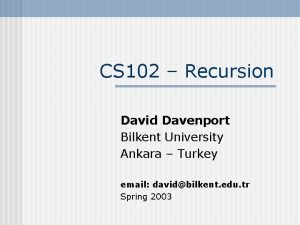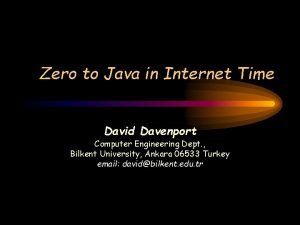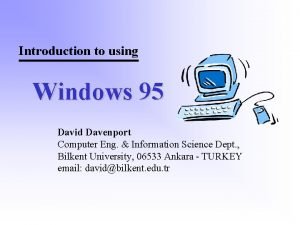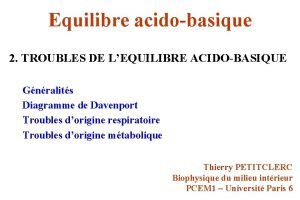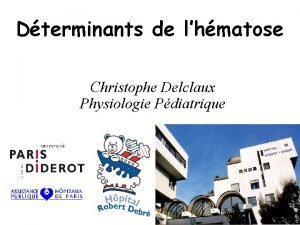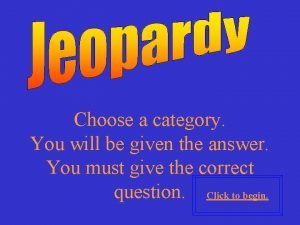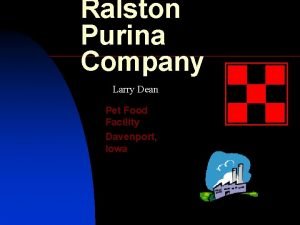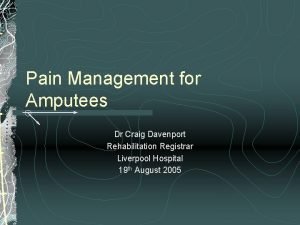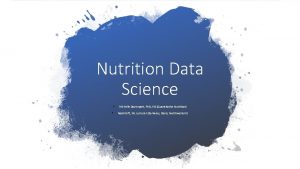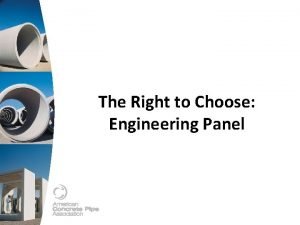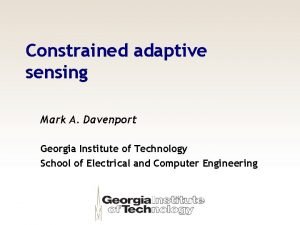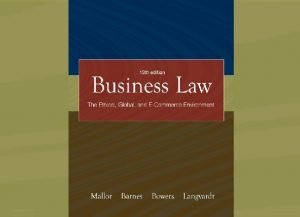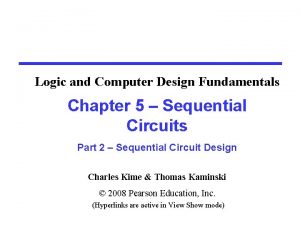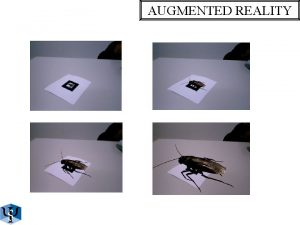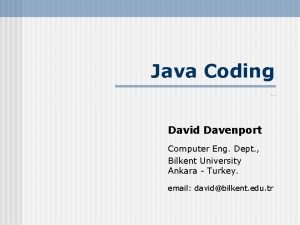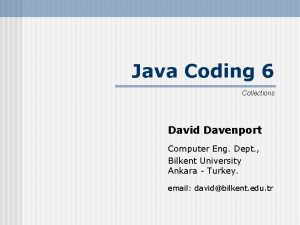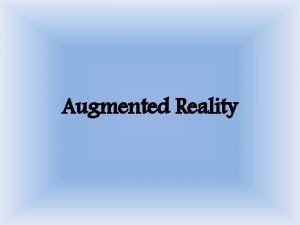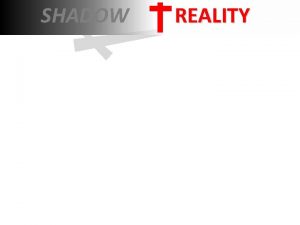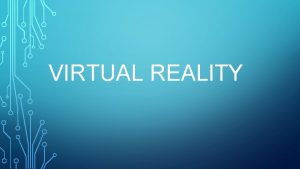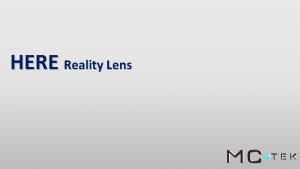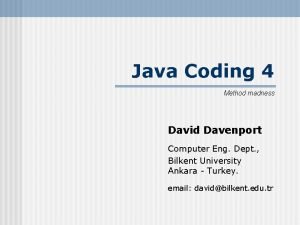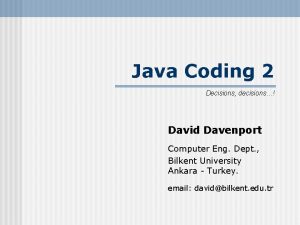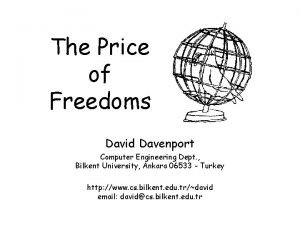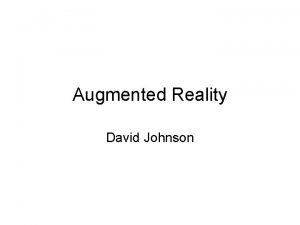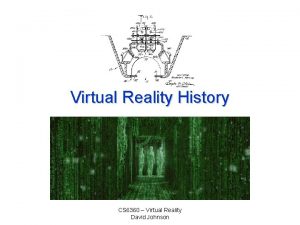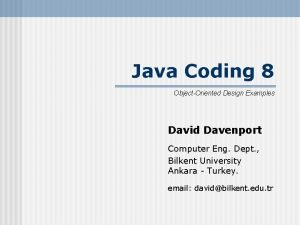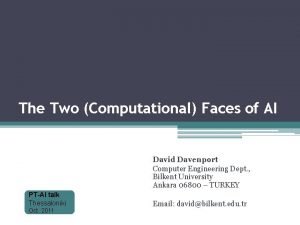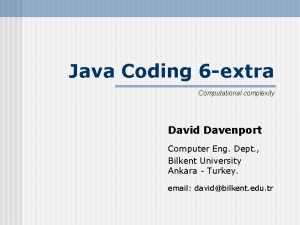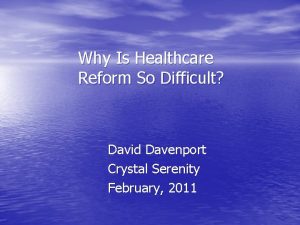The Reality of Logic David Davenport Computer Eng























- Slides: 23

The Reality of Logic David Davenport Computer Eng. Dept. , Bilkent University, Ankara 06533 - Turkey. email: david@bilkent. edu. tr

Outline • Background – Logic & its Problems – Fuzzy & other deviant logics – Truth • A Cognitive “solution” • The new Reality (non) standard disclaimer

Logic • Deductive vs. Inductive • Classical Logic or The study of valid arguments The study of consistent beliefs “… is a paragon of clarity, elegance, and efficiency. ” - Quine • Founded on three “laws, ” – Identity A=A – Excluded Middle A or ~A – Contradiction ~(A and ~A) { only two possible truth values } { nothing can be true & false}

Logic • Declarative sentences “Is it true that x” – Contrast with questions, commands, etc. – Grammatical substitution! { feels right to native speaker! } • Arguments – Statement & supporting reasons – Conclusion given premises { deduce or infer } • Valid Argument – no possible situation where premises are all true but the conclusion is not. { entailment } • Dependent on meaning & truth!

Logic - problems? • Reference “The King of France is bald” • Borderline cases “Ted Bartlett is fat” • Others. . . Monotonicity, semantics, temporal, modal, etc.

Fuzzy Logic • Roots in Russell’s Vague Logic & Jan Lukasiewicz’s multivalued logic • Denies Law of Excluded Middle (A or ~A) t(s) = 0 or t(S) = 1 vs. 0 <= t(S) <= 1 • “Snow is White” “Grass is green” “grass is 85% green”

Fuzzy Logic - examples

Fuzzy Logic - examples

Fuzzy Logic - examples

Truth • The common notion – reality, historical, mathematical, logical • Existing Theories of truth – Correspondence Theory – Coherence Theory – Pragmatic Theory – Others (Deflationary, Semantic, Appraisal, etc. )

Computational Systems • • • Modeling the world model world Purpose is “prediction” States of model map to states of the world Rely on causality mind Multiple models But no mind, no model! world model

Computation and Cognition • Cognitive agents – satisfy needs in complex world – are computational systems • Mental Models, “connect” to the world – (causal links, accurate reflection, corresponding states, etc. ) mind • Linguistic utterances world utterances

Representation • Mind/representation must be logical! • Traditionally, z “if a & b & c then z” – but, not very realistic. • Alternative, Inscriptors a b “if z then a & b & c” – naturally fuzzy, predictive, but require “not” – models scientific & invalid reasoning c

Language • Learn words Situation in which word “CAT” is heard & cat is seen • ostensibly • by verbal defn. • Sentences • abstract grammar • utter word at time. • Purpose • communication • manipulation! visual senses audio senses “CAT”

Meaningful Utterances • Making sense of utterances W mind U mind • Selecting the relevant model W U mind ? • True, False & Unknown U

mind (a) W U 1 W 1 U 2 W 2 U 3 mind 1 (c) W mind 2 mind 1 (e) W mind 2 mind U W 2 U W 3 W 1 U 1 (b) mind 1 mind 2 (d) U Some Other Possible Relations between Utterance, Mind & World

And Truth… • Matching is coherence Truth • Correspondence – but of utterance & mental model Mental Model World Utterance Map or Model Truth • Mind-dependent notion of truth – shared language, environment & senses

Utterances about truth “Snow is white” mind W U (a) mind W U (b) “It is true that snow is white” “Snow is white is false”

The Liar Paradox mind Uliar • “This sentence is false” mind • Paradox found U 1 U 2

Paradox Lost mind U 1 U 2 Philosophical whirlpool - stay clear!

Summary • Mind as computational system • making predictions to guide actions to satisfy needs. • must (of necessity) be inherently logical • Need to store/represent info. • inscriptor formulation, defused borderlines! • Utterances • meaning • truth & utterances about truth • defused liar paradox!

Some “Conclusions” • Reality does not come pre-cut and labeled. • Truth is a relation btw utterance & mind. • Representation is predictability.

Thank you.
 Funksiyaning eng katta va eng kichik qiymati
Funksiyaning eng katta va eng kichik qiymati David davenport bilkent
David davenport bilkent Jrobo
Jrobo David davenport bilkent
David davenport bilkent Diagramme de davenport
Diagramme de davenport Gaz du sang veineux
Gaz du sang veineux Homer davenport saltville va
Homer davenport saltville va Purina davenport iowa
Purina davenport iowa Dr craig davenport
Dr craig davenport Dr michelle davenport
Dr michelle davenport Bliss gatekunst
Bliss gatekunst Leon davenport
Leon davenport Mark a. davenport
Mark a. davenport Davenport v cotton hope plantation
Davenport v cotton hope plantation First order logic vs propositional logic
First order logic vs propositional logic First order logic vs propositional logic
First order logic vs propositional logic First order logic vs propositional logic
First order logic vs propositional logic Combinational logic circuit vs sequential
Combinational logic circuit vs sequential Tw
Tw Project management plan example
Project management plan example Combinational logic sequential logic
Combinational logic sequential logic Combinational logic sequential logic 차이
Combinational logic sequential logic 차이 Combinational logic sequential logic
Combinational logic sequential logic Logic and computer design fundamentals
Logic and computer design fundamentals

